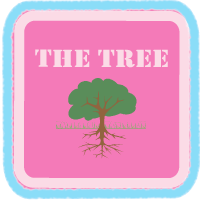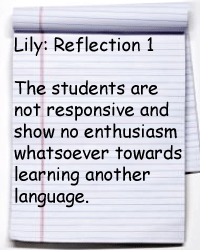 Student Motivation and Investment in the Language Classroom
Student Motivation and Investment in the Language Classroom
|
Motivation is a key factor in language learning. The word “motivation” conjures up many related concepts, like “attitude”, “enthusiasm”, “mood”, “desire”. In more recent years, we have replaced “motivation” with the word “investment” because investment emphasizes the students' contribution of interest and passion in their learning. We know that motivation, passion, enthusiasm, interest and desire all increase when a student makes an investment in his or her learning and learning related activities. Students who are invested more strongly in learning an SL will have more interest, particularly in oral communication, than students who just want good grades who will be pretty happy just doing reading and writing activities. |
What are the different types of motivation?
There are many different types of motivation. One axis (or scale) of motivation contrasts instrumental versus integrative motivation. This scale describes the purpose for which the learner wants to learn a second language. Instrumental motivation refers to learning the second language for some concrete, specific purpose; perhaps students need the second language for admission to a post-secondary institution, or maybe it is a program requirement. Integrative motivation refers to wanting to learn the language in order to integrate into a community that already speaks the language.
 |
In your opinion, which type of motivation -instrumental or integrative- should language teachers strive to promote? |
Another axis (or scale) on which motivation can be measured contrasts intrinsic and extrinsic motivation. Intrinsic motivations are based on an individual learner’s personal goals for their own self-fulfillment or purpose whereas extrinsic motivations are usually imposed by others (parents, society, schools, etc.) and are often influenced by tangible rewards such as grades. Typically in schools, we see extrinsic motivation in students when in fact the ideal is always to have intrinsically motivated learners.
back to top
How are students motivated?
When it comes to self-motivation and external motivation, we are in a difficult time right now. The fact is, a person can only be motivated about what they already know, and when they are introduced to something new, they then have the chance to be motivated about something new. If, in a student’s previous experience, they never had any opportunities to interact with other cultures or the second language culture or language itself, then the teacher and that class are playing a very significant role in introducing that student to something that they could become more motivated and interested in and then more willing to invest in.
 |
What might be some challenges that teachers face when motivating students? Do you think there is a difference in student motivation between language classes and other subject classes? Watch the following video to see some tips for motivating students in the TL. (time 3:40) |
Is there a way to get students who are just motivated for the grade to expand or shift their motivation?
We must remember that a classroom is a system. This means that it consists of a number of pieces that constantly interact wit one another. Joseph Schwab talks about four key pieces of the classroom environment; these include the student, the milieu, the teacher and the subject area. If you have, for example, an enthusiastic teacher, it can make a really big difference. If you are passionate about your subject area and show enthusiasm, this can influence student motivation. Being passionate about your subject area also means you are more likely to invest your own time and perhaps even your own money in creating a milieu that makes it interesting and exciting for the students. This means you may have more posters, intriguing objects, pictures or postcards of your own travels, personal photo albums from trips, and allow your students to see all of these things. When a teacher is very enthusiastic and passionate about a subject it is likely that it will rub off on the students and increase their enthusiasm because at the very least they are going to think “there is something that is driving this person [the teacher] that I am curious about”. Who you are as a teacher, the time you take to make your activities more interesting, the props, your sense of humour, your effort to integrate technology, to bring in music and aspects of culture—all of this will tell students something that they didn’t think of before.
back to top
How are motivation and investment related?
As discussed, there are many different types of motivation, ranging from instrumental to integrative and intrinsic to extrinsic. Many students in school settings are motivated extrinsically, that is, they often focus on what they will receive by doing their work, such as good grades. Teachers can try to shift this extrinsic motivation towards intrinsic motivation by creating a sense of student investment. As of late, the term investment has been used in addition to motivation when describing language learners. This word implies that the more a student is invested in an idea or activity, the more the activity is going to be attached to that student’s identity. For example, if a student is really interested in developing fluency in the language classroom because they will be going on a trip or speaking to a native speaker in person, then they will be more invested in developing that fluency. As a result, that student is going to be more motivated to participate in activities and show a greater desire to invest more time and effort in the classroom. Investment describes students feeling a personal interest and involvement in what is happening in the classroom; if they feel they are a part of the activities and can make a difference, they will be more likely to take part and will feel a personal stake in the results. In this way, students will focus less on the external rewards and more on their personal motivations. |
back to top











